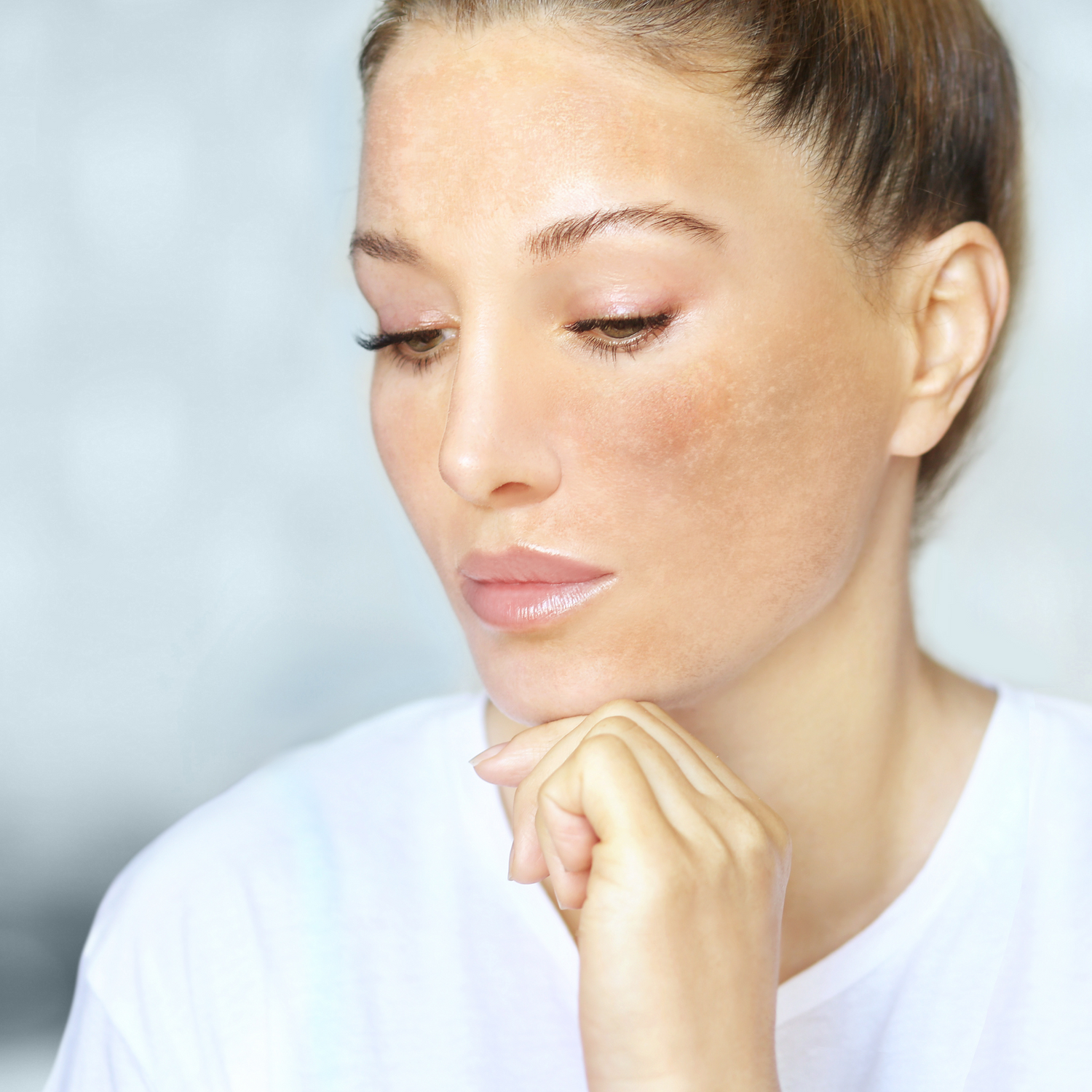Pigment spots

What are pigment spots?
Abnormal pigmentation or hyperpigmentation of the skin can manifest itself in many forms. This includes hormonal pigmentation such as melasma or environmental pigmentation such as liver spots, age spots, sun damage and post-inflammatory pigmentation.
Skin pigmentation is a common and usually harmless condition in which certain areas of the skin become darker due to the accumulation of melanin. It typically appears in varying sizes, mainly on the face, chest, back and hands.
Hyperpigmentation is directly affected by an increase in melanin levels. Melanin is the pigment found in the skin that determines its overall color. Melanin plays a critical role in protecting the skin against the harmful effects of the sun's UV rays. Many genetic and environmental factors play a role in regulating the body's melanin. Because of this, an excess or deficiency of melanin causes hyperpigmentation.
What causes pigment spots?
Our genetics play a large role in determining our skin's structure, texture, and resistance to aging and other skin problems. If a parent experiences abnormal skin pigmentation, there is a higher chance that it will also occur in the next generation.
Fluctuations in female hormones, such as estrogen and progesterone, can also lead to hyperpigmentation or melasma, but environmental influences can also contribute to the development of pigment spots.
Abnormal skin pigmentation is caused by overactive pigment cells. Melanin is the pigment that gives skin its color. When the skin is exposed to sunlight, the body produces extra melanin to protect the skin from the sun's UV rays. The more melanin produced, the darker the skin. Therefore, pigment spots may appear in areas of the skin where excess melanin accumulates.
Regular UV exposure to the skin results in noticeable spots and accelerates the aging process in UV-exposed parts of the body.
The body's melanin production process is the same regardless of where the UV light source comes from. Artificial UV light from tanning beds can also contribute to overstimulation of melanin. If melanin production is highly concentrated in a specific area, it can lead to hyperpigmentation and the formation of pigment spots.
What treatments are there for pigment spots or hyperpigmentation?
Here at Heiszler Hair & Beauty, the following anti-hyperpigmentation treatments are available:
✔️ PHOTOREJUVENATION treatments are extremely effective in the treatment of pigment spots. IPL photorejuvenation works by directing controlled pulses of light onto the skin to destroy pigmentation without damaging the surrounding tissue. A course of treatment may be recommended for optimal results.

Pigment spot treatment prices
If you are interested in Photorejuvenation treatment to treat your pigment spots or hyperpigmentation, contact us today.
During our free consultation, we will be happy to assess your skin problem and prepare your personalized treatment plan.
If you have any further questions, contact us at one of our contacts or fill out the form below, our expert team will be happy to answer your questions and help you find the treatment that suits your needs.
